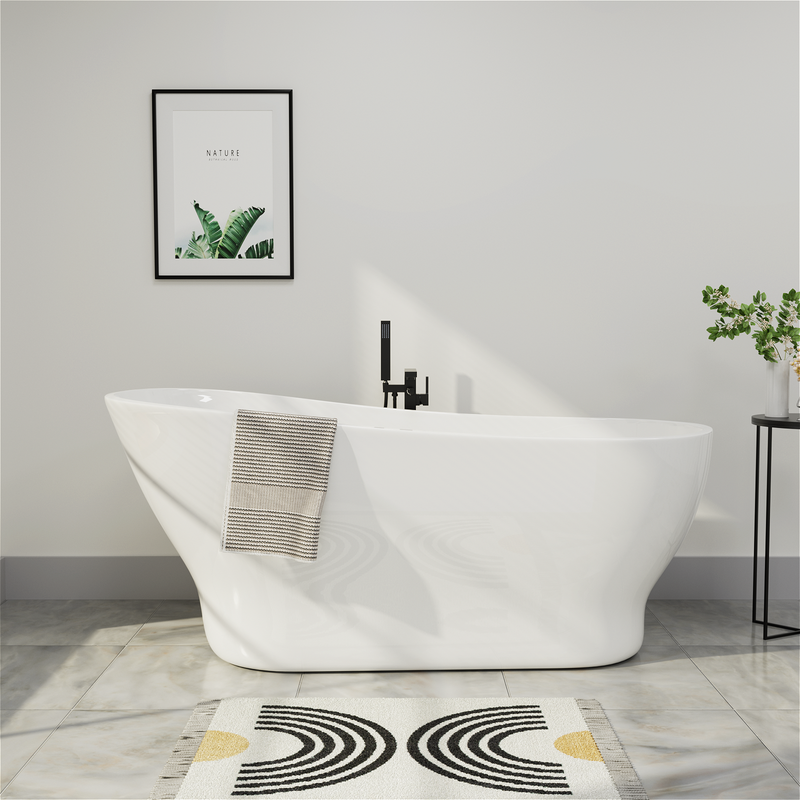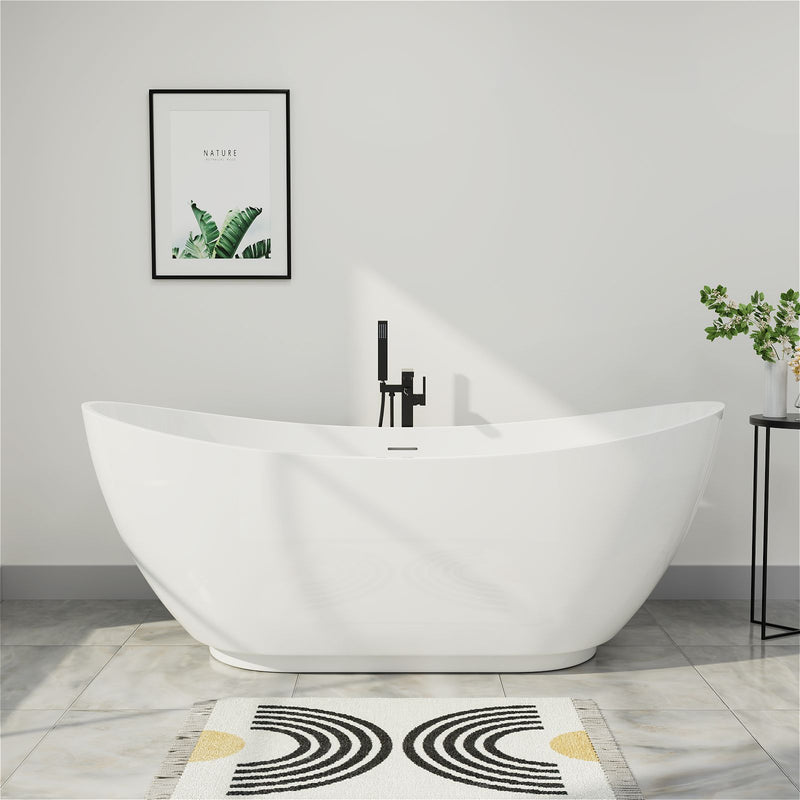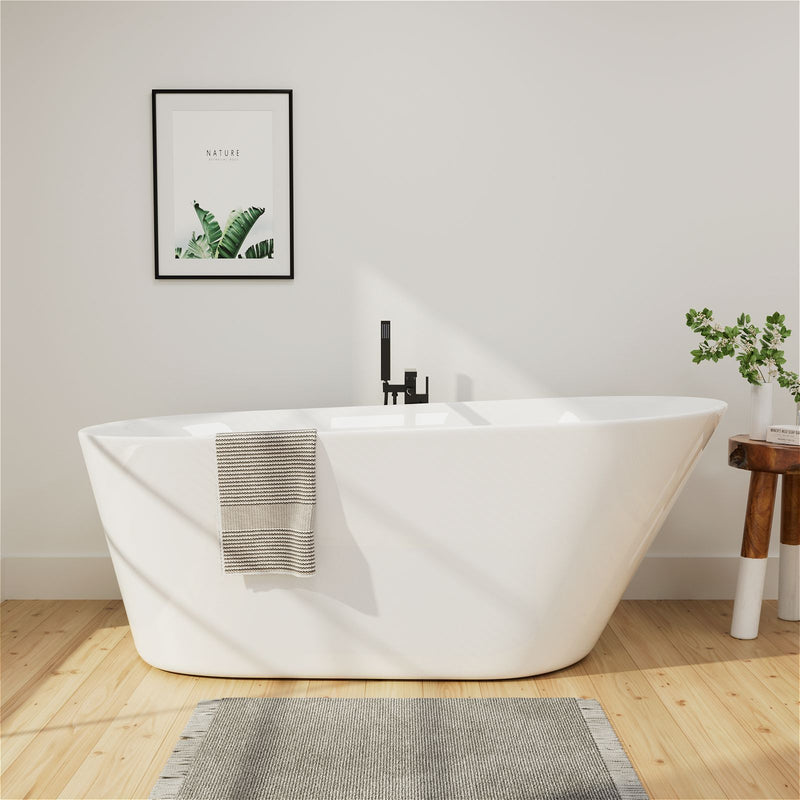Acrylic bathtub refinishing offers homeowners an affordable alternative to full bathtub replacement, breathing new life into worn, stained, or outdated surfaces. The process involves repairing any damage and applying a new coating system that can make an old tub look like new. While bathtub liners provide another option, refinishing stands out for its ability to preserve the original tub's fit and contours. This comprehensive guide examines the refinishing process, costs, durability considerations, and maintenance requirements, providing the essential information homeowners need to decide whether refinishing their acrylic bathtub represents a worthwhile investment.
Understanding Acrylic Bathtub Refinishing
What is Bathtub Refinishing?
Bathtub refinishing involves applying a new surface coating to an existing bathtub. The process typically includes thorough cleaning, repairs to any chips or cracks, and the application of a primer and topcoat designed specifically for bathtub surfaces. These coatings are typically epoxy-based or polyurethane-based products that create a durable, waterproof seal. The restoration can address common issues like surface scratches, stains, discoloration, and minor damage, potentially extending the life of a bathtub by several years.

Professional Refinishing vs. DIY Kits
Professional bathtub refinishing generally provides superior and longer-lasting results compared to DIY kits. Professionals use commercial-grade materials, professional spray equipment, and have technical expertise that enables proper surface preparation and application. The coatings applied by professionals are typically thicker and more durable than those found in DIY kits. They also often include warranties ranging from one to five years, providing homeowners with protection against premature failure.
DIY bathtub refinishing kits offer a lower-cost option but come with significant limitations. These kits usually contain brush-on or roll-on coatings that may not self-level as effectively as professionally sprayed finishes, potentially resulting in visible brush marks or an uneven surface. The materials in DIY kits are generally less durable and may begin showing wear within a year or two. Proper surface preparation is challenging for homeowners to execute effectively, and improper preparation often leads to adhesion problems and premature failure.
The Bathtub Refinishing Process
Surface Preparation
Surface preparation represents the most critical phase of the bathtub refinishing process. Professionals begin by thoroughly cleaning the tub with specialized cleaners designed to remove soap scum, body oils, and any existing coatings. After cleaning, they repair any chips, cracks, or holes using a bathtub repair compound that matches the tub's contours. The next step involves etching the surface with an acidic etching compound or mechanically abrading it with sandpaper to create a surface profile that promotes coating adhesion. Finally, the technician meticulously masks off surrounding areas to protect them from overspray during the coating application.
Application Process
The application process requires precision and controlled conditions. Professionals typically use specialized spray equipment to apply multiple thin coats rather than one thick coat. This approach helps prevent runs, sags, and orange peel texture in the finished surface. Between coats, technicians allow specific flash-off times as recommended by the coating manufacturer. The type of coating used varies, with two-part polyurethane coatings generally offering better durability and chemical resistance than epoxy-based products. Proper ventilation is crucial during application to ensure worker safety and optimal curing conditions.
Curing Time and Considerations
After application, the refinishing coating requires adequate time to cure properly. While the surface may feel dry to the touch within a few hours, full curing typically takes 24-72 hours. During this period, the tub should not be used, and the bathroom should be well-ventilated to facilitate proper curing. Temperature and humidity significantly impact curing times, with ideal conditions being temperatures between 65-85°F and humidity below 50%. Rushing the curing process or using the tub prematurely can compromise the finish's durability and longevity.
Cost Analysis and Value Proposition
Factors Influencing Cost
Several factors influence the cost of professional bathtub refinishing. The tub's condition represents a primary consideration—extensive damage requiring significant repair work will increase the price. The tub's size also affects cost, with larger whirlpool tubs costing more to refinish than standard alcove tubs. Geographic location plays a role, as prices tend to be higher in metropolitan areas with higher operating costs. Additional services like reglazing surrounding tile or replacing caulking will increase the overall cost. Most homeowners can expect to pay between $300-$600 for professional bathtub refinishing.

Comparing Refinishing to Replacement
Bathtub refinishing typically costs 50-75% less than full bathtub replacement. Beyond the direct cost savings, refinishing offers several advantages over replacement. The process creates minimal disruption to the bathroom and household, typically being completed in one day without the dust, debris, and potential water damage associated with tub removal. Refinishing preserves the existing plumbing configuration, avoiding potential plumbing modifications that can add significant cost to a replacement project. For homeowners concerned about environmental impact, refinishing generates minimal waste compared to sending an old tub to a landfill.
Durability and Maintenance
Expected Lifespan
A professionally refinished bathtub typically lasts 5-10 years with proper care, though this varies based on usage frequency, cleaning practices, and the quality of materials used. High-quality professional refinishing jobs using polyurethane coatings tend to last longer than those using epoxy-based products or DIY applications. The original tub's condition also influences longevity—tubs with structural issues or recurring moisture problems may not be good candidates for refinishing.
Proper Maintenance Practices
Proper maintenance significantly extends the life of a refinished bathtub. Homeowners should use only mild, non-abrasive cleaners and soft cloths or sponges for cleaning. Abrasive cleaners, scrub pads, and harsh chemicals like bleach or ammonia can damage the finish. Using a bathtub mat with suction cups rather than adhesive pads helps prevent surface damage. Regular re-caulking around the tub edges prevents water from getting behind the finish, which could cause lifting or bubbling. Promptly addressing any chips or damage with a touch-up kit provided by the refinishing professional can prevent small issues from becoming major problems.
Frequently Asked Questions
How long does the bathtub refinishing process take?
Most bathtub refinishing projects are completed in 4-6 hours, plus an additional 24-48 hours for the coating to fully cure before the tub can be used.
Can a refinished bathtub be repaired if it gets damaged?
Minor chips and scratches can often be repaired using touch-up kits available from refinishing professionals. More significant damage may require spot repair or complete refinishing.
Is bathtub refinishing safe in terms of chemical exposure?
Professional refinishers use proper ventilation and safety equipment during application. Once fully cured, the refinishing coating is safe for normal bathtub use.
What types of damage can bathtub refinishing fix?
Refinishing can address surface issues like stains, discoloration, minor scratches, and small chips. It cannot repair structural damage or significant cracks.
How does the refinished surface compare to the original acrylic?
While a professionally refinished surface can look nearly identical to new, it may be slightly more susceptible to scratching and chemical damage than original acrylic.
Can I change the color of my bathtub through refinishing?
Yes, bathtub refinishing can change the tub's color, with white being most common. Custom colors are typically available at an additional cost.
What are the limitations of bathtub refinishing?
Refinishing cannot fix structural problems, extensive cracking, or persistent moisture issues. Tubs with these problems should be replaced rather than refinished.
Conclusion
Acrylic bathtub refinishing presents a cost-effective solution for homeowners seeking to update their bathroom without the expense and disruption of full replacement. When performed by a qualified professional using high-quality materials, refinishing can restore a bathtub's appearance and extend its functional life by several years. While DIY kits offer a lower-cost alternative, they generally provide less durable results. Homeowners should carefully assess their tub's condition, weigh the costs and benefits, and select an experienced professional if pursuing refinishing. With proper maintenance, a refinished bathtub can provide years of reliable service while enhancing the bathroom's overall aesthetic.





